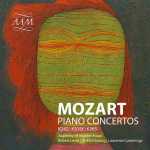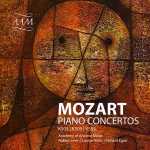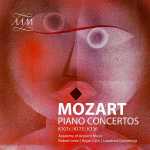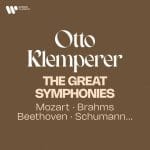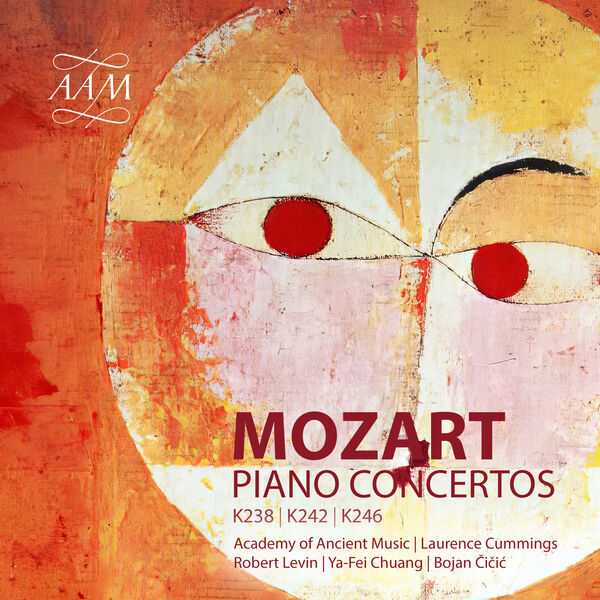

Composer: Wolfgang Amadeus Mozart
Performer: Academy of Ancient Music, Robert Levin, Bojan Čičić, Ya-Fei Chuang, Laurence Cumming
Format: FLAC (tracks)
Label: AAM Records
Catalogue: AAM044
Release: 2024
Size: 1.98 GB
Recovery: +3%
Scan: cover
Piano Concerto No. 6 in B flat major, K238
01. I. Allegro aperto
02. II. Andante un poco adagio
03. III. Rondo. Allegro
Concerto for Three Pianos & Orchestra, K242
04. I. Allegro
05. II. Adagio
06. III. Rondo. Tempo di minuetto
Piano Concerto No. 8 in C major, K246 “Lützow”
07. I. Allegro aperto
08. II. Andante
09. III. Rondo. Tempo di minuetto
Academy of Ancient Music (AAM) releases the penultimate volume of an acclaimed project to record Mozart’s complete works for keyboard and orchestra. This volume includes Mozart’s Concerto No. 7 for Three Pianos and Orchestra, performed here uniquely on three different types of keyboard instruments: by Robert Levin (tangent piano), Ya-Fei Chuang (fortepiano) and Laurence Cummings (harpsichord). It follows the release of the same concerto in Mozart’s own arrangement for two keyboards (Vol. 11) and is joined on this album by two other Piano Concertos composed in Salzburg in the early months of 1776. The hardback CD package is accompanied by comprehensive notes commissioned specially for the album.
This 2024 release, which made classical best-seller charts early that year, is the next-to-last installment in a series of Mozart piano concertos by the Academy of Ancient Music that began in the 1990s, was abandoned in 2000, and was finally resumed during the COVID-19 pandemic. The collection features the unorthodox Mozart pianist Robert Levin, with various directors supplanting the original creator, Christopher Hogwood; here, keyboardist Laurence Cummings and violinist Bojan Čičić share conducting duties. There are three piano concertos, numbers six through eight, all composed in 1776. The central figure is Levin, who, as usual, contributes several novelties. One is a tangent piano. This instrument, somewhere between a fortepiano, a harpsichord, and a clavichord, is rarely heard; Mozart might have known them, although there is no evidence that he did. It is capable of modest dynamic variation, and the late 18th century instrument Levin plays here has a charming, crystalline sound. Beyond this is Levin’s trademark heavy use of improvisation, which has at least some justification in what is known of Mozart’s own practices; Levin improvises his own cadenzas, as Mozart certainly did, and these are attractively integrated with the main material. The Piano Concerto No. in F major for three pianos and Orchestra, K. 242, is a special and perhaps troublesome case; Levin and Cummings deploy three different keyboard instruments: Levin’s tangent piano, a fortepiano (played by Ya-Fei Chuang), and a harpsichord (Cummings). This technically undemanding concerto is generally played with three similar instruments, whether modern pianos or fortepianos and the interpretation takes another step into the speculative. In general, however, this release, like its predecessors, offers fresh and thought-provoking Mozart readings.
